Scole Film "Wie der Staub"
Glyphs' Origin finally identified
Introduction
The Scole work in the years 1995 til 1998 included
several photographic experiments with brand new films. The outcome of
these experiments was absolutely fascinating.
There are several publications available on the
Scole sittings in total such as:
| ● | SPR Proceedings - Volume 58 - Part 220 - November 1999 |
| Montague Keen, Arthur Ellison, David Fontana - The Scole Report | |
| ● | Grant & Jane Solomon - The Scole Experiment - 1999/2006 |
| ● | Robin Foy - Witnessing the Impossible 2008 |
These publications describe all details of the
film experiments including our signed witness reports, so that there is
no necessity to repeat it here.
I just want to again make a clear statement: We,
myself and my wife Karin are 100% convinced of the genuiness of the 30
Scole sittings we participated.
In particular the following film showing glyphs
and some German words "Wie der Staub" etc. was controlled by me in such
a way that there was no doubt left at all: it was bought by us in a
normal Foto Shop in Norwich, it has always been in our hands, before,
during and after the sitting and it was in addition secretly marked by
myself. There was no way to manipulate something and the result of the
experiment was again magnificent.
Dr. Hans Schaer participated in this experiment
and Hans too carefully observed everything happening.
Film "Wie der Staub" with Glyphs
The follwing picture shows the film in total
length with words, symbols, glyphs and a lot of lines connected to them.
On the right side you find the German words: "Wie
der Staub in ... Wind" translated in English:"Like the Dust in ...
Wind". In the middle part are 2 symbols and in the left part 2 blocks of
glyphs, in total 58 glyphs.
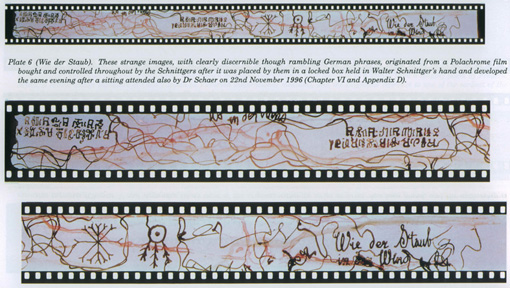
Left Block of Glyphs:
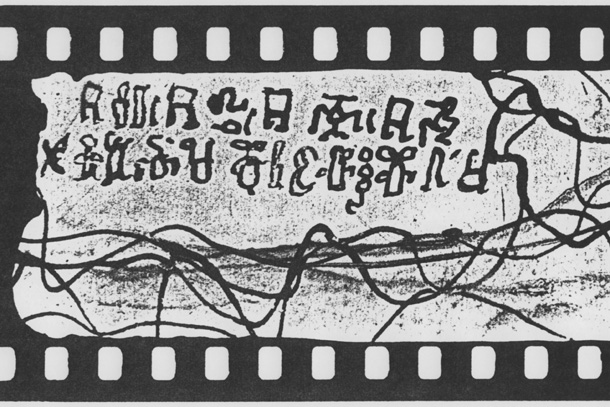
Right Block of Glyphs:
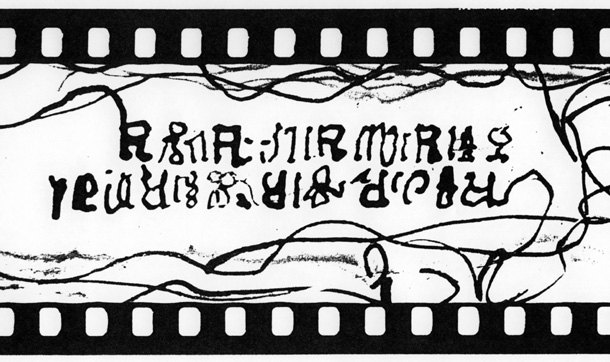
We spent quite some time in 1996/97 in libraries and the internet but we did not succeed in finding the glyphs. We then gave it up.
Now 13 years later, it was a wax-ball apport in the Dec.15, 2009 Felix Circle sitting that showed signs on a small piece of paper similar to the Scole film glyphs that triggered off a new attempt in search. (See separate report in this homepage with title: Felix Circle Dec.15, 09)
With this apport in hand the motivation was high enough to spend a lot of hours in the internet and finally we found it. The glyphs are identified with those on a wooden Easter Island tablet, the so-called Small Santiago Tablet.
Tablets are rare now. Religious prohibition has resulted in the destruction of almost all tablets, an awful loss for the Easter Island culture. More information in Easter Island wikipedia.
It was the homepage http://www.rongorongo.org/ that allowed us to find the glyphs. A big compliment to the operators of this site, it is a comprehensive coverage of all Easter Island glyphs and tablets and their background. We have used a few of their pictures to show the tablet to Scole film comparison.
It is important to mention that the glyphs on the film are in handwriting, a fact that made it a challenge to find the origin. Several glyphs are simplified as if they were "written" in a hurry.
The Small Santiago Tablet (http://www.rongorongo.org/corpus/g.html)

The Small Santiago Tablet - The Area of Scole Film Glyphs
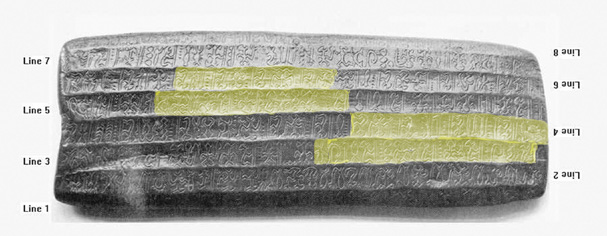
In the following section the Scole film glyphs are compared to the Easter Island glyphs.
Some remarks how to read the comparison:
The numbers below the glyphs are the distance of the glyph to the start of the line in Millimeters. For example a number 107 means that this glyph is located 107mm behind the start of the line. The Scole film numbers correspond to the Millimeters of the original tablet.
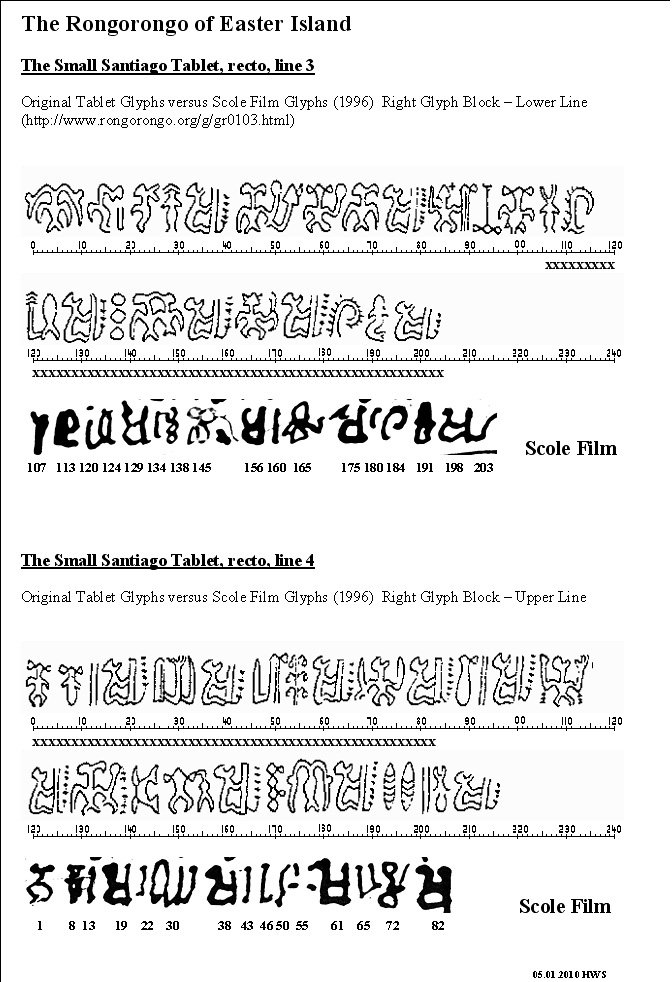

The glyph in the middle of the fim is an Easter Island glyph too. According to the official Easter Island Glyph denomination as to Barthels it has the number 31 (http://www.rongorongo.org/signs/g001099.html).
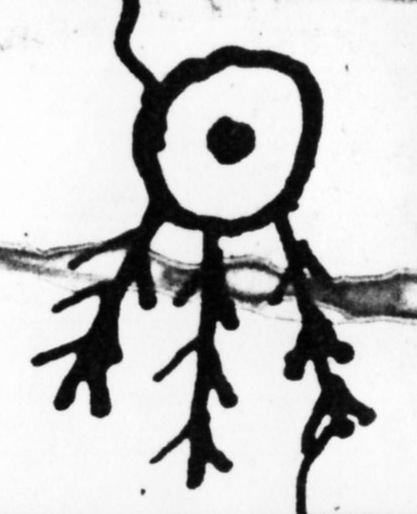
Final Remark
The fact to get something rare like the Easter Island glyphs in handwriting on a Scole film is already very extraordinary.
There is still the question why just these glyphs have been chosen. So far we do not have an answer to this.
But we very much appreciate the effort undertaken to open up human mind for things that normally are considered as impossible.
Latest Info:
In February 2010 we contacted an expert on the rongorongo script of Easter Island, and he gave us to understand that this particular text appears to be a priestly chant praising the island's 'Ariki Mau, or paramount chief of Easter Island, and listing the "first fruits" that the 'Ariki Mau causes to grow there because of his socio-spiritual power.